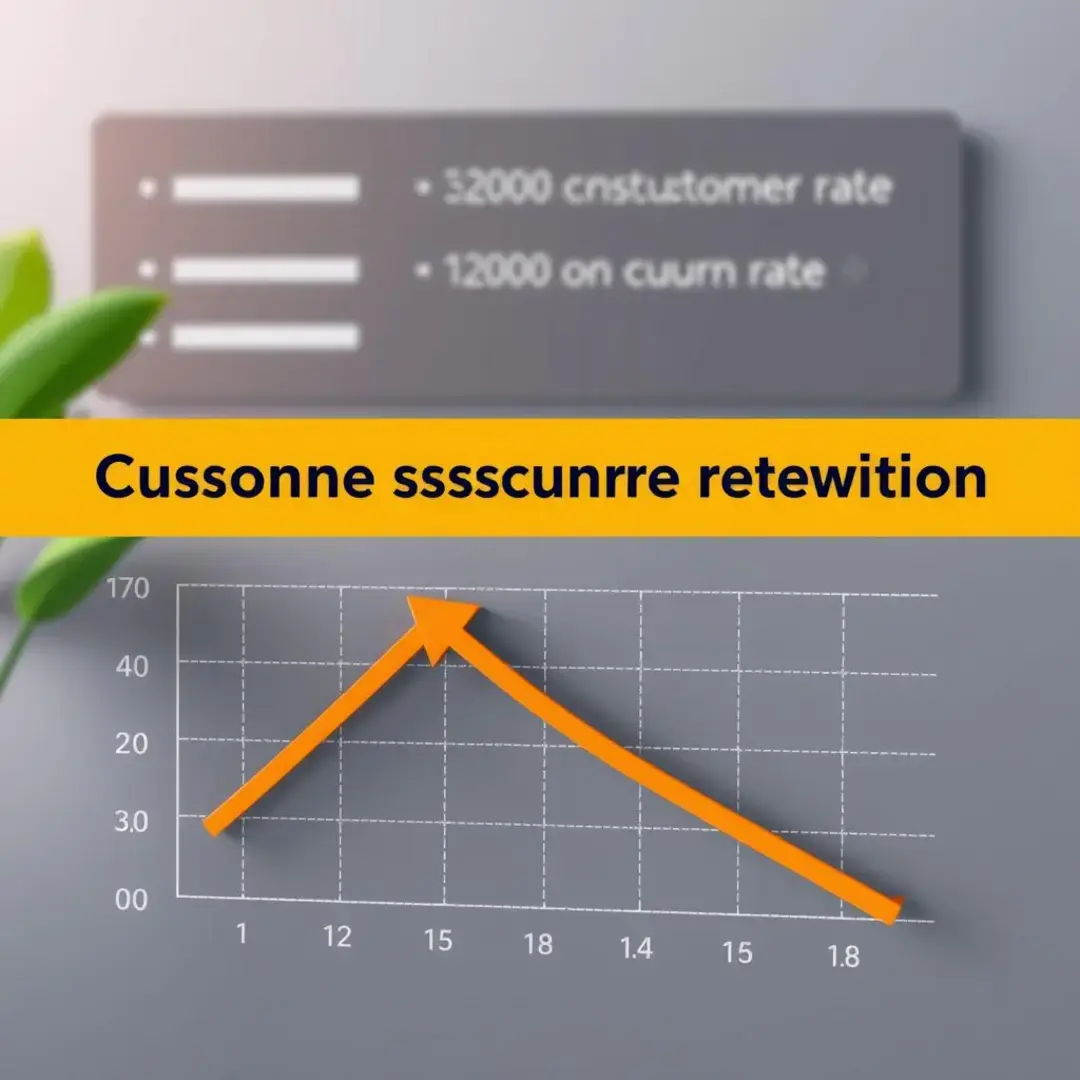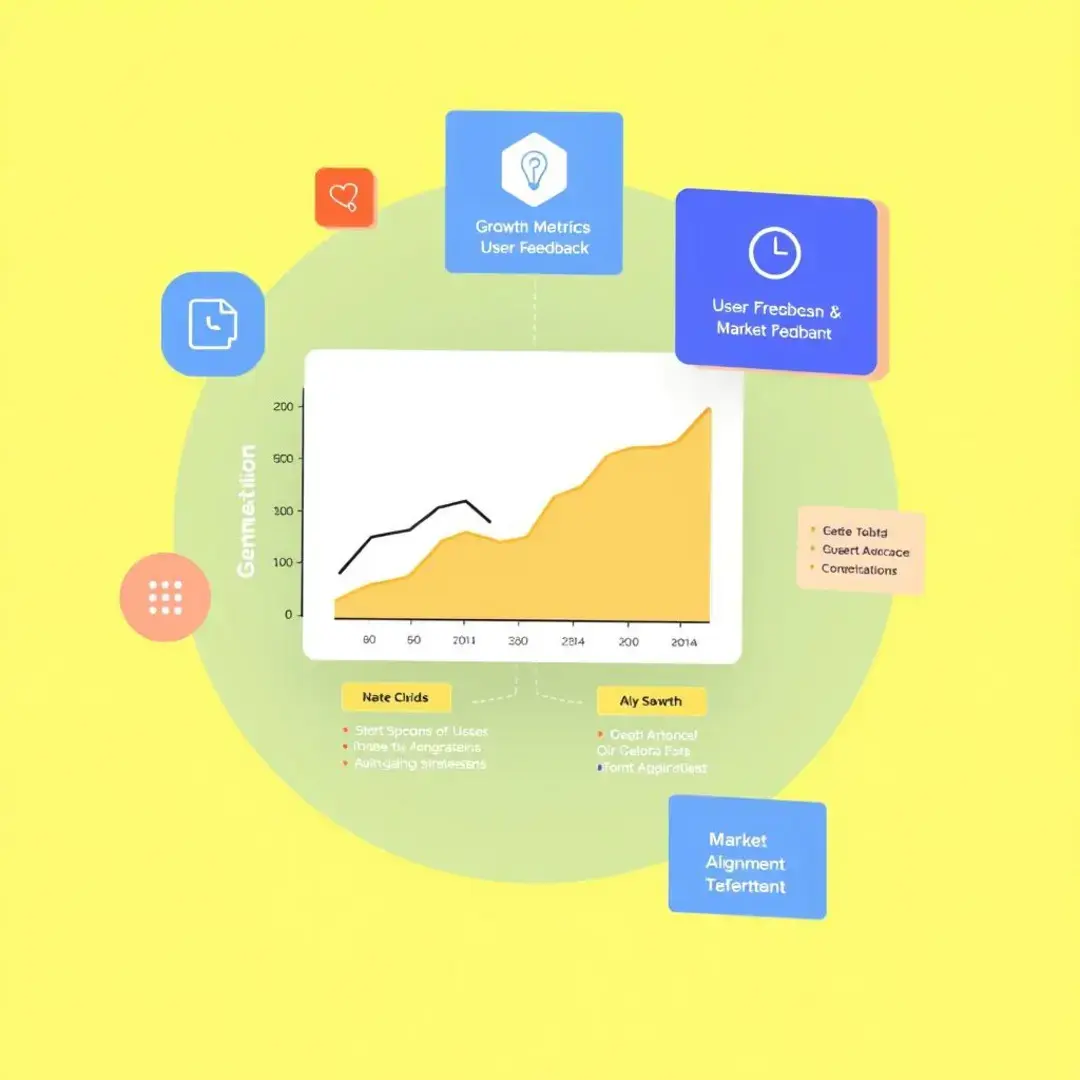10 Key Metrics for identifying a Startups Growth Potential
1. Market Size and Growth

The market size and growth potential of a startup are critical indicators of its future viability and success. A large and expanding market can provide fertile ground for new businesses to flourish. Understanding how your startup fits into this landscape is essential to gauge its growth prospects.
1.1. Total Addressable Market (TAM)
The Total Addressable Market, or TAM, represents the total revenue opportunity available if your product or service captures 100% of the market share. Estimating TAM helps startups align their business models with actual market potential.
To calculate TAM, identify your target demographic and analyze their purchasing power. This can be accomplished through market research and data analytics, enabling startups to set realistic revenue targets.
Once you’ve calculated your TAM, it’s equally important to assess growth projections. Understanding industry trends and consumer behavior can give insights into future expansion opportunities within your niche.
1.2. Market Share Potential
Market share potential evaluates how much of the market your startup can realistically capture based on competition and industry trends. This metric is pivotal for understanding your startup’s growth trajectory.
By analyzing competitors’ market share, startups can identify gaps and weaknesses to exploit in their strategy. Knowing what competitors are doing well—and where they’re lacking—can guide effective market positioning.
It’s essential to project how your marketing strategies will affect market share over time. Use data-driven marketing and sales strategies to create realistic growth targets for your startup.
2. Customer Acquisition Cost (CAC)

customer acquisition Cost is a vital metric that helps startups evaluate the efficiency of their marketing strategies. It quantifies how much a business spends to acquire a new customer, thus determining the sustainability of growth.
2.1. CAC Payback Period
The CAC payback period refers to the time it takes for a startup to recoup its marketing expenses through the revenue generated by a customer. A shorter payback period indicates healthier cash flow and quicker returns on investment.
Startups can enhance their CAC efficiencies by employing targeted marketing strategies that reach the right audiences. Optimizing channels and refining messaging can significantly reduce unnecessary spending.
2.2. Customer Lifetime Value (CLTV)
Complementing CAC, Customer Lifetime Value measures the total expected revenue from a customer during their entire relationship with the company. This insight allows startups to invest wisely in marketing efforts.
By segmenting customers based on behavior and revenue contribution, startups can develop tailored strategies that enhance customer retention. This, in turn, boosts the overall CLTV, positively impacting growth potential.
3. Revenue Growth Rate

Consistent revenue growth is a key metric that investors look for when evaluating a startup’s growth potential. Understanding the revenue growth rate helps companies set benchmarks and track their overall performance in the market.
3.1. Month-over-Month (MoM) Growth
Month-over-month growth illustrates the percentage increase in revenue from one month to the next. Tracking this metric helps startups identify trends and seasonal fluctuations, helping to make informed strategic decisions.
Startups should focus on creating sustainable growth patterns rather than temporary spikes. By analyzing data, businesses can predict future performance and adapt all operations accordingly.
3.2. Year-over-Year (YoY) Growth
Year-over-year growth compares revenue between two dates a year apart, helping startups evaluate long-term performance. This metric provides critical insights into overall business health and stability.
When assessing YoY growth, it’s also beneficial to benchmark against industry averages. Doing so allows startups to see how they stack up against competitors and understand market dynamics better.
4. Gross Margin

Gross margin is the difference between revenue and Cost of Goods Sold (COGS), expressed as a percentage of revenue. A healthy gross margin signifies that a startup retains a good share of revenue after Accounting for production costs.
4.1. Cost of Goods Sold (COGS) Analysis
COGS includes all direct costs related to the production of goods sold by a startup. A detailed analysis helps in identifying areas for cost-saving and operational efficiency to maximize gross margin.
Implementing strategies such as bulk purchasing, negotiating with suppliers, and improving production processes can reduce COGS and enhance profitability. Continuous monitoring is essential for sustaining a low-cost production environment.
4.2. Pricing Strategies for Maximizing Gross Margin
Adopting the right pricing strategies can also achieve desired gross margin levels. Startups should explore different pricing models to find out what works best for both their audience and their business objectives.
Value-based pricing focuses on the perceived value of the product to the customer, while cost-plus pricing is based on production costs plus a margin. Understanding both methods can help founders choose an effective pricing strategy that maximizes profits.
5. Customer Churn Rate

Customer churn rate measures the percentage of customers who stop using a company’s product during a given time period. High churn rates can indicate unresolved issues and adversely affect growth potential, leading to increased acquisition costs.
5.1. Identifying Churn Drivers
Understanding why customers leave is crucial for improving retention strategies. Data analysis of customer feedback and behavior can help identify common churn drivers and areas requiring improvement.
Once churn drivers are identified, implementing targeted strategies—like personalized communications or loyalty enhancements—can help address customer concerns and significantly reduce churn rates.
5.2. Customer Retention Rate
Conversely, the customer retention rate assesses the percentage of customers who continue using your product or service over a specific time. High retention rates signify strong customer satisfaction and loyalty, which are essential for sustained growth.
Creating rewards or loyalty programs encourages repeat business and nurtures long-term relationships. Investing in customer engagement fosters a deeper emotional connection, which serves as a buffer against churn.
6. Burn Rate and Runway

Burn rate is the rate at which a startup spends its capital before reaching profitability. Managing burn rate is essential to extend financial runway and support growth endeavors.
6.1. Managing Burn Rate for Sustainable Growth
Startups should keep a close eye on their burn rates, as excessive spending can jeopardize the business’s future. Developing a comprehensive budget and sticking to it can help ensure that expenses align with long-term growth objectives.
Cost optimization in operations directly contributes to a healthier burn rate. Regularly reviewing and trimming unnecessary expenses allows a startup to invest more in growth initiatives without running out of cash.
6.2. Extending Runway Through Strategic Funding
Strategic funding can provide additional runway, enabling startups to navigate through rough phases and invest in growth opportunities. Careful consideration of funding sources ensures that startups maintain control while expanding.
A variety of funding options exist—from Angel investors to venture capital and crowdfunding. Assessing each option’s alignment with business objectives is critical for making the best decision regarding future growth.
7. Team and Leadership

A startup’s founding team plays a pivotal role in its growth potential. The experience, expertise, and adaptability of leadership can dictate the startup’s ability to navigate challenges and seize opportunities.
7.1. Assessing the Experience and Expertise of the Founding Team
Evaluating the qualifications and backgrounds of team members provides insights into the startup’s capabilities. Diverse skill sets often contribute to enhanced decision-making and innovative problem-solving.
Startups must regularly assess their team’s skill sets and identify areas needing bolster. Closing these gaps, whether through hiring or professional development, is key to driving growth and efficiency.
7.2. Evaluating the Company’s Organizational Structure
An effective organizational structure can enhance communication and operational efficiencies. Understanding where to make adjustments will benefit collaboration and ultimately spur greater growth.
Startups should remain flexible in their organizational structure to facilitate growth. As the company scales, adjusting hierarchies and roles ensure that operations do not become bottlenecked.
8. Product-Market Fit

Achieving product-market fit is an indication that the startup is meeting customer needs effectively. It’s a crucial aspect that significantly impacts growth potential, customer satisfaction, and revenue generation.
8.1. Measuring User Engagement and Satisfaction
Regularly measuring user engagement and satisfaction can provide invaluable insights into product-market fit. Gaining feedback aids in understanding customer perceptions and areas needing refinement.
User-driven feedback loops allow startups to continuously improve their offerings. Creating pathways for customer suggestions fosters an iterative process of development that strengthens the product.
8.2. Analyzing Product Usage Data
Data analytics plays a vital role in evaluating how customers interact with a product. Identifying patterns of usage helps startups refine their roadmap and customization efforts.
Understanding what features are most valued by users allows startups to focus their resources on enhancements that will drive growth. Leveraging data can lead to informed development decisions.
9. Competitive Landscape

Understanding the competitive landscape is fundamental for startups to carve out their niche. Analyzing competitors helps identify how to position the business effectively and the strategies needed to succeed.
9.1. Identifying Key Competitors and Their Strengths and Weaknesses
Conducting competitive analysis aids startups in understanding who their key competitors are and what they bring to the market. This knowledge enables startups to adjust their strategies accordingly.
A structured approach to competitive analysis, such as SWOT (Strengths, Weaknesses, Opportunities, Threats), can provide a thorough understanding of the competitive landscape. This helps in identifying potential opportunities for growth.
9.2. Analyzing Competitive Pricing and Positioning
Pricing and positioning are crucial in attracting customers and gaining market share. Understanding competitor pricing strategies empowers startups to set competitive pricing that reflects value and attracts customers.
Effective differentiation strategies are necessary to stand out in a saturated market. Startups must clearly communicate their unique value propositions to attract and retain customers.
10. Traction and Milestones

Measuring traction relates to quantifying the momentum a startup is gaining in the market. Demonstrating growth through specific milestones can significantly enhance credibility with potential investors.
10.1. Evaluating Key Milestones Achieved
Startups should regularly evaluate the milestones they have reached. This could be user acquisition, revenue targets, or product launches—every achievement helps paint the picture of potential growth.
Establishing and tracking realistic and measurable milestones aids in maintaining focus and accountability. This strategic approach keeps the entire team aligned toward common objectives.
10.2. Demonstrating Traction Through User Growth and Revenue Generation
Demonstrable traction—like increased user growth and rising revenue—is compelling when attracting investors. The narrative of continuous progress implies that the startup is on a solid path for future scalability.
Whether in pitch decks or discussions, effective communication of traction can greatly influence funding opportunities. Startups should prepare to articulate their growth story convincingly to capture investor interest.












